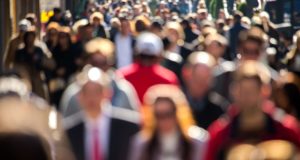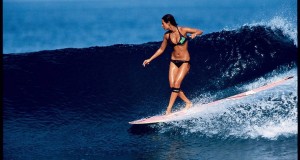
There is common ground between Shiatsu and Western massage. Both systems are wonderful ways of relieving stress and promoting health and they focus on the body of the person to be treated. Further, neither system uses any sophisticated electronic or mechanical machinery in the diagnosis or implementation of treatment. The third common ground is that both Shiatsu and massage are classified in most of the Western World to remain outside the bastion of Western medicine, which is based on current Western mainstream scientific tradition. Outside Japan both Shiatsu and Western massage share the outfields of non-traditional treatment or alternative medicine with Healing, Reiki, Hypnosis or Crystal Healing.
Shiatsu practitioners tend to distance themselves from the bandwagon of alternative treatment approaches like Reiki or faith healing by demonstrating their usage of anatomy, physiology and pathology in the same vein as Western medicine. This could be one of the explanations for the great popularity of Shiatsu in the West as it bridges the West and the East.
When we explore the differences between Shiatsu and Western massage, we notice four main differences.
- The historical evolution of the treatments.
- Technique used and ingredients in treatment.
- The philosophy behind the approach and the essence, which every practitioner attempts to capture.
- The nature of derivative systems that have emerged.
Body massage might be one of the oldest forms of medical care known to man. Though we may not know what the ancient Egyptian practitioners actually believed in, Egyptian tomb paintings show people being massaged. A Chinese book from 2,700 B.C., The Yellow Emperor’s Classic of Internal Medicine, recommends massage of skin and flesh as the appropriate treatment for many ailments. Ayurveda, the 5000-year old traditional Indian system of medicine, greatly stresses the therapeutic benefits of massage with aromatic oils and spices. Writing in the 8th century BC, Homer of Greece mentions massage being used commonly also for Olympic athletes in the same way as it is used today.
1. The History and Evolution of Shiatsu
Though the earliest modern reference to the term Shiatsu in a publication might be the 1915 Japanese book, Shiatsu Ryöhö written by Tenpaku Tamai, Tokujiro Namikoshi’s (1905-2000) followers consider him to be the founder of Shiatsu. His approach was entirely different from the Chinese meridian or Qi-based therapies. Namikoshi at age seven in 1912 independently developed a technique of pressing with his thumbs and palms as he tried to nurse his mother who suffered from rheumatoid arthritis. Namikoshi’s influence on Shiatsu can be compared to the role of Picasso in art because he not only created an important genre, but also became an inspiration for many other creators of derivative therapies.
Tokujiro Namikoshi opened his first clinic for Shiatsu Therapy in 1925 in Hokkaido using the system that he perfected. In addition to founding in 1940 the first school of Shiatsu Therapy in Tokyo (Now known as the Japan Shiatsu College), Namikoshi was involved with the legal recognition of Shiatsu in Japan, which may account for his emphasis on Western medical theories. Namikoshi achieved fame and successfully treated many high-ranking persons such as the former Japanese Prime Minister Shigeru Yoshida. As his fame spread foreign celebrities like Marilyn Monroe and Muhammad Ali sought his treatment. Currently in Japan, Namikoshi’s system enjoys special legal status. Starting from 1947, after an eight-year clinical investigation period to ascertain which of 300 treatments could be legalised, the Ministry of Health of Japan acknowledged Shiatsu Therapy, as it proved effective. Shiatsu was placed in the same category with Anma and Western Massage in 1955.
In 1964 Shiatsu was acknowledged as a separate therapy on its own in Japan. Everyone practising Shiatsu in Japan should obtain a licence from the Ministry of Health and Welfare. Licensing also requires that Shiatsu practitioners study a 2,500-hour educational program of Shiatsu therapy lasting about three years in the universities or colleges authorized by the Ministry of Health and Welfare and pass the national exam.
2. Technique used and ingredients in treatment
The second difference between Shiatsu and Western massage is in technique and in the use of ingredients like oils and spices. Shiatsu technique relies on finger and palm pressure, while western massage uses a rubbing motion. Since shiatsu does not involve rubbing, no oil or lotion is ever used during a treatment.
3. Philosophy of Western Massage and Shiatsu
The third and main difference comes from the philosophy behind Western Massage and Shiatsu.
The principal difference between Shiatsu and other modern Western forms of bodywork, e.g., Swedish massage, is that Shiatsu is a form of holistic healing while modern Western massage is based on conventional Western views of wellness and healing. Western massage usually considers the human body the domain of the masseur while the mind is the domain of psychology and psychiatry. Adapting a holistic approach, Shiatsu regulates the nervous system and promotes natural healing by stimulating chemical responses in the body.
Western massage is based on the idea that muscle tension and improper alignment may cause or worsen physical, mental and internal imbalances. Massage techniques attempt to reduce tension within the body to facilitate the free flow of blood and energy. This in turn makes the major systems of the body (immune, circulatory, nervous, etc.) to be better able to naturally heal disease and promote health and well-being.
In Shiatsu, there are 838 basic shiatsu pressure points, or Atten in Japanese, located on the muscles, nerves, blood vessels, lymph vessels, bones and endocrine glands. Depending on the condition of the body, the therapist applies proper types of pressure. The tighter the muscles are, the lighter the pressure. As the muscles relax, the pressure becomes deeper but is always firm and steady. This triggers the release of hormones and body chemicals necessary to heal, to soothe and to make you mind and body perform optimally. This method of triggering the own healing system of the body does not produce side effects or toxins and is thus a totally healthy way of getting relief from ailments.
Looked at casually from far Shiatsu whole-body charts can be confused with Qi or meridian charts used in Chinese medicine. But Namikoshi Shiatsu practitioners are quick to point out that Namikoshi’s style of Shiatsu places emphasis only on regions based on anatomy and physiology rather than on energy channels/pathways/meridians. Shiatsu works the whole body (including doing stretches).
4. Derivative treatments
The last area of difference between Shiatsu and Western massage is that of derivatives. Derivative Shiatsu usually refers to the other current styles of Shiatsu, which have evolved after Namikoshi Shiatsu, such as Meridian Shiatsu, Zen Shiatsu, Tao Shiatsu, Tsubo Shiatsu, Ohashiatsu and Quantum Shiatsu. None of these derivative styles are recognised by the Japanese Ministry of Health and Welfare.
Within Western massage there are many styles and techniques, which focus on particular areas of the body (e.g., deep tissue massage, tendo-muscular massage, scalp massage, etc.). However, Western Massage can be broadly grouped into three camps, sports massage, well-being massage and erotic massage. Sports massage aims to get the athlete in fit shape and ensure superior performance. Creating a certain type of ambience with candles, colours, incense or music is very important to well-being and erotic massage but almost totally absent in sports massage. The camp of well-being massage displays the widest divergence in different types of derivative forms like aromatherapy, reflexology or deep tissue massage.
Sensuous massage or erotic massage has been a derivative of traditional massage for centuries in all parts of the world but to date there is no sensuous or erotic Shiatsu therapy.
Shiatsu and Western massage do have common ground but differ much in theory, philosophy and practice. However, in spite of the differences, the aim of both systems is the same – a balanced, healthy and happy individual.
References:
- Tokujiro Namikoshi, Japanese Finger-Pressure Therapy Shiatsu. Japan Publishing – (1974)
- Tokujiro Namikoshi, SHIATSU; HEALTH AND VITALITY AT YOUR FINGERTIPS Japan Publishing – (1971)
- The Canadian College of Shiatsu Therapy
- The Shiatsupractor Association of Canada

Source by Francis Gamache
 Vitamin Agent The Health & Naturalistic Source
Vitamin Agent The Health & Naturalistic Source


